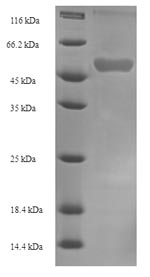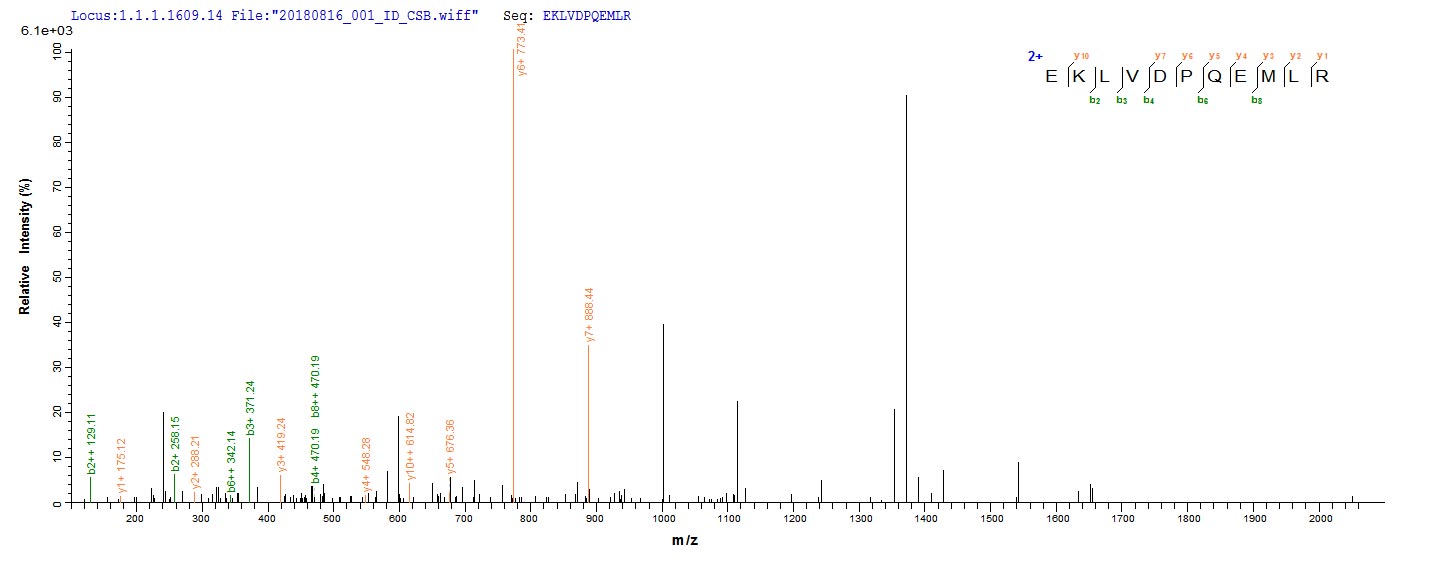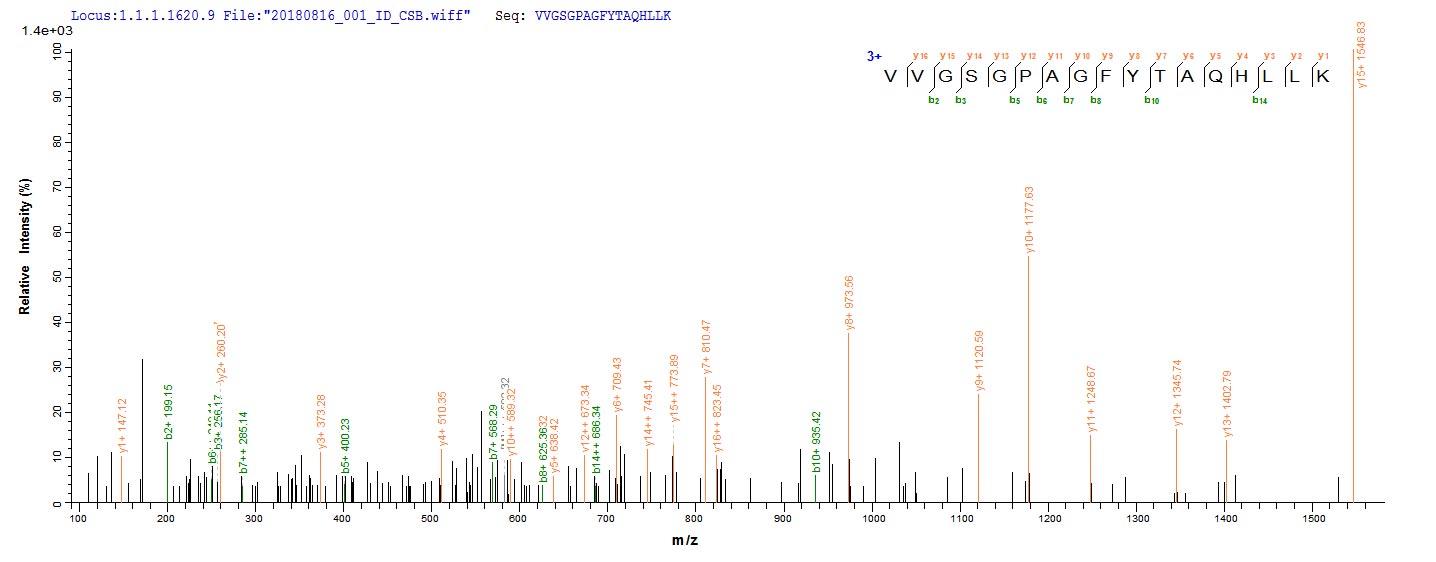The preparation of this recombinant Human FDXR protein was to use gene recombination DNA technology to obtain a recombinant vector connected with a FDXR fragment (33-451aa) that could be translated into the FDXR protein and then transferred it into E.coli cells to express the recombinant FDXR protein molecule. In order to get the target protein with high purity, N-terminal 6xHis-SUMO tag was used in the production. The purity is 90% determined by SDS-PAGE.
Ferredoxin reductase (FDXR, also known as adrenodoxin reductase) is a mitochondrial flavoprotein and functions as the first electron transfer protein of mitochondrial P450 systems such as P450scc. It is a mitochondrial flavoprotein that initiates electron transport from NADPH to several cytochromes P450 via two electron carriers, ferredoxin 1 (FDX1) and FDX2. Functionally, FDXR is suggested to be involved in various metabolic processes, including steroidogenesis, heme and iron-sulfur cluster biosynthesis. Notably, recent studies have shown that FDXR mutations are associated with mitochondrial disorders, probably due to their role in iron-sulfur cluster protein biosynthesis. In addition, FDXR has also been found to be a sensitive and reliable biomarker of radiation exposure in vivo. FDXR could regulate TP73 tumor suppressor via IRP2 to modulate aging and tumor suppression. Mutation in FDXR gene is associated with Sensorial Neuropathies. Abundant FDXR expression in these steroidogenic cells was maintained through SF-1 binding to the intronic enhancer of the FDXR gene.






